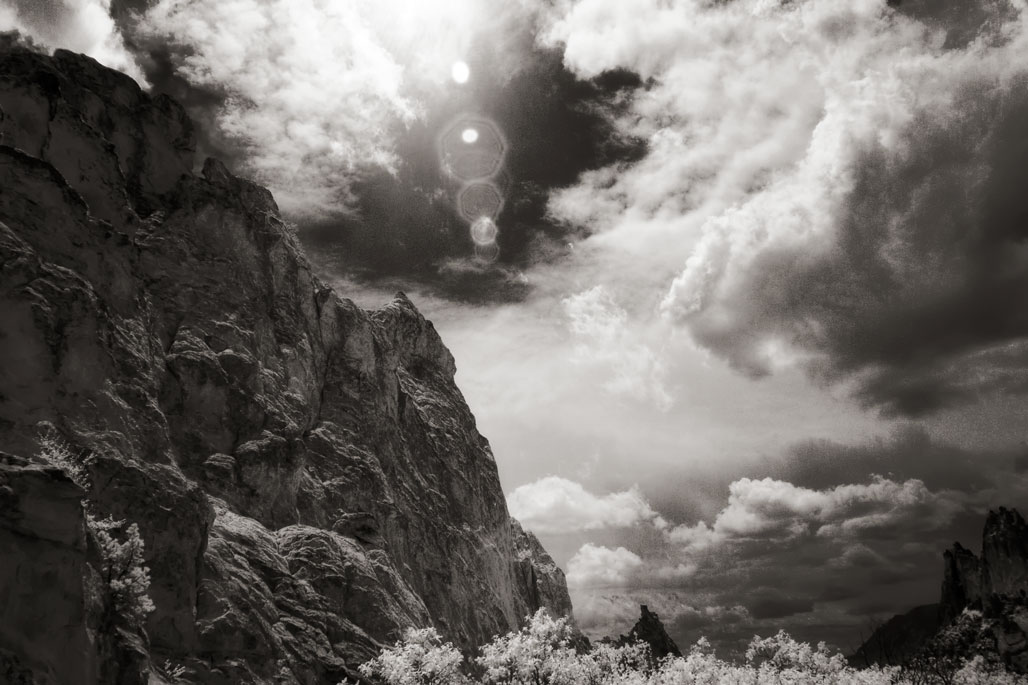Today’s Post by Joe Farace
Life moves out of a red flare of dreams Into a common light of common hours, Until old age brings the red flare again.—William Butler Yeats
Back in the film photography days almost every lens you bought came with its own lens hood. And not just any hood but a real jumping-up-and-down metal lens hood. Nowadays most camera and some lens companies make lens hoods optional and some of these hood can be expensive, even for plastic versions. To be fair, some lens companies, notably Sigma and Tamron, include a well-made hood with many of their lenses at no additional cost.

How I Made this Photo: While this infrared image was made close to noon MDT—theoretically prime infrared shooting time—there is still flare because some wide angle lenses, like the Lumix G Vario 12-32mm f/3.5-5.6 lens used here, are prone to flare when shooting IR. No official Panasonic lens hood is available for this lens so I purchased a third-party hood from Amazon and it sort of works with my non-IR converted cameras. The camera used here was a Lumix G6 that was converted to infrared capture by Life Pixel. Exposure was the middle frame of a three-stop bracket at f/11 and 1/1600 sec and ISO 400. There was flare in each of bracketed shots.
I believe that you should use a hood on all of your lenses for two reasons:
- Preventing Flare: This happens when light strikes the front element of a lens and is scattered through internal reflections and even within the elements themselves. Flare makes its presence know in visible artifacts or as an overall haze across the image making it look washed out with reduced contrast. There was a misguided time in my photographic past when I sometimes used flare as a compositional element in an image ala J.J. Abrams. These days I don’t quite feel the same way.
- Protection: Unlike some of my photographic compadres I’m pretty careful about how I handle my gear but accidents can happen and the damage caused by accidentally banging a lens against an immovable object can by mitigated with a lens hood. This only happened to me one once but never again. A hood can be cheaper than a lens repair, although I had one famous Internet photographic pundit tell me, “I just have the front elements re-polished to remove scratches.” He may be able to afford that but I can’t.
 And if your main objection to using lens hoods is that they cost too much I can only add “I feel your pain” but I also have a solution—third party lens hoods.
And if your main objection to using lens hoods is that they cost too much I can only add “I feel your pain” but I also have a solution—third party lens hoods.
Take one of my favorite mirrorless lenses, the Olympus M.Zuiko Digital 45mm f/1.8. It’s hard to beat for portraiture and I love everything about this lens except the cost of its optional lens hood. The official Olympus LH-40B hood costs $33.99, while the Vello LH-40Bversion is only $10.99 and they look a lot alike and should function the same too, protecting the lens against flare and accidents.
